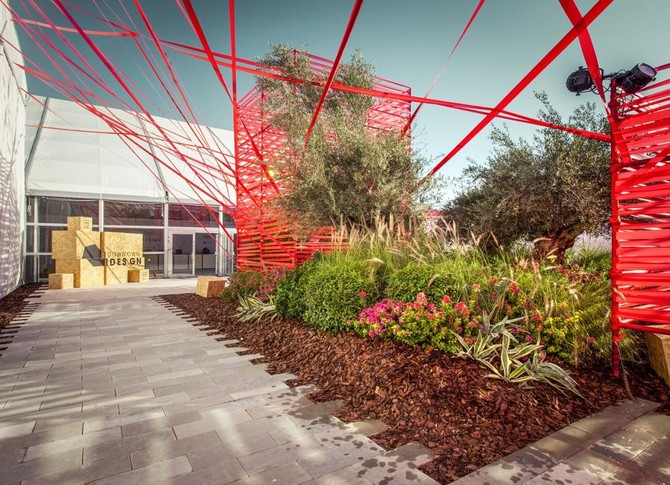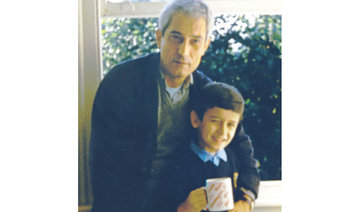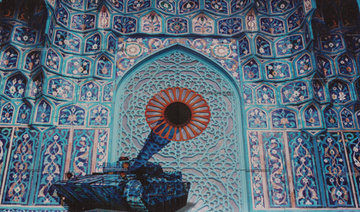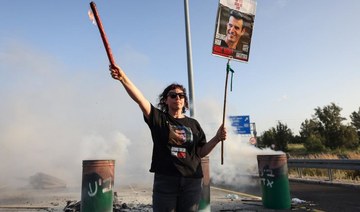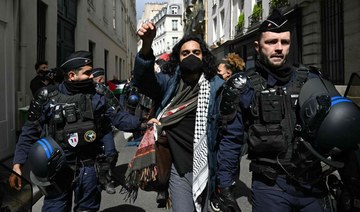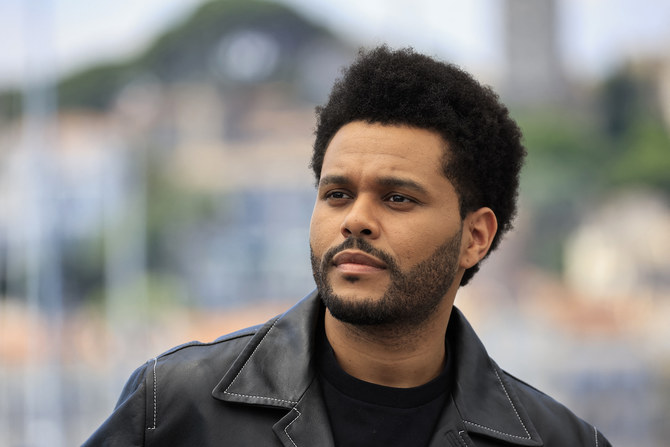DUBAI: An exploration of the intersection between art, design and expression, Dubai Design Week is on the verge of wrapping up after a creative few days of more than 200 events staged across the city.
Dubai Design Week was founded in 2015, under the patronage of Sheikha Latifa bint Mohammed bin Rashid Al-Maktoum, the vice chairman of the Dubai Culture and Arts Authority, who said at its inception: “Dubai Design Week represents the dynamic evolution of Dubai in steering innovation, creativity and collaboration in the fast-growing design sector. Hosting this flagship design event in Dubai defines our city’s credentials as a fast-emerging global design capital that inspires designers around the world, provides them a vibrant platform for showcasing their works and fosters the next generation of design talent.”
The six-day event, which kicked off on Nov. 13 and will close on Nov. 18, aimed to attract more than 50,000 visitors from around the region and the world to Dubai to cement the city’s status as “a cutting-edge, vibrant global design hub,” according to organizers. Architects, designers, thought-leaders, influencers and public audiences explored talks, workshops and exhibitions around Dubai. Meanwhile, Arab News took a wander around the core location of the event — Dubai Design District — to see what points of inspiration could be found.
In its two years, the event has grown larger than ever, with 35 percent more events than last year, in increase that is immediately noticeable on the ground. This year, Dubai Design Week opened with a talk by Sir David Adjaye, a leading architect of his generation who designed the Nobel Peace Center in Oslo and the Smithsonian National Museum of African American History and Culture in Washington, DC, however, such talks are not the only additions. There are more installations and, overall, a bigger buzz and crowds mingle in the sun, exploring the diverse installations. School groups also wander through, taking endless selfies with some of the more grand exhibits.
This year’s program features the Global Grand Show, which was “an exhibition of groundbreaking works from… 91 of the world’s leading design schools, representing 40 countries and six continents,” according to organizers. These 200 graduate projects were grouped under the themes of “Connect, Empower and Sustain.”
Highlights of the week
Abwab
Having run throughout the week, with the final day slated for Nov. 18 from 10 a.m. to 7 p.m., the Abwab exhibit is “a highlight of Dubai Design Week as it is the only initiative of its kind to offer a snapshot of regional design talent from the Middle East, North Africa and South Asia,” according to organizers. Abwab, which means doors in Arabic, is an evolved concept of “a single pavilion in the heart of Dubai Design District exhibiting as many countries as possible. Over 250 designers were reached through an innovative peer-selection process — ‘designer dominos’ — as a pay-it-forward mechanism to strengthen a community. In order to be considered for selection, a designer is required to nominate the next designer to submit.” Final designs were chosen based on the degree of their clear inspiration, ideas and design grown from the roots of these cultures in the region, “to capture the spiritual essence of a place through architectural expressions.”
Iconic city: Loading... Casa
Set to run until Nov. 18, from 10 a.m. to 7 p.m., this exhibition is curated by Salma Lahlou who worked as the vice president of the National Museums Foundation of Morocco and founded Thinkart, an organization working in the fields of visual arts and curatorial practices, in January 2015.
The exhibition creates a non-linear experience where archival images, sound recordings, a short film, a monumental drawing and contemporary photography collide. The five points of design are transhumance, mutation, counter-culture, amnesiac memory and hedonism and the expression of design is realized through a graphic mural landscape, tapestry design, a visual poem and audio by the Moroccan music group Nass El-Ghiwane.
This exhibit can be overwhelming at first, with all senses mindfully engaged by the collection of artists curated. However, once the different elements of this design come into focus, the observer feels connected to the sights and sounds of Casablanca, reading, listening, watching and engaging with art. This exhibit tends to hold observers for a little longer than the installations as they make their way through all of the sensory experiences.
Silent Call
Designed by Dubai-based furniture expert Khalid Shafar — whose approach to design encompasses his personal expression of form, movement, emotion and “the tale” of objects — Silent Call was on show throughout the week and will also be accessible on Nov. 18, from 10 a.m. to 7 p.m.
This installation is a chandelier that was inspired by mosques, “the crown of Islamic architecture, and the beauty of the call to prayer.” As described by the event organizers, this installation “showcases the eternal inspiration and symbiosis of art and religion, while integrating time and motion for a purposed function beyond aesthetics. He has incorporated the symbolism of the number five into this work, referencing the five daily prayer times that are one of the most important obligations of the Islamic faith.”
The chandelier features silhouettes of the domes of five countries’ iconic mosques: Russia, Malaysia, Germany, the UAE and Denmark.
Prologue
Perhaps the most eye-catching installation, Prologue, designed by Swedish-British duo Fredrikson Stallard and presented by Swarovski, is a monumental, freestanding sculpture weighing 1.2 tons and holding over 8,000 amber-colored Swarovski crystal droplets within its four meter-diameter. The installation is stunning and this is one of the few areas where attendees line up to take pictures. It has been perfectly positioned to revel in Dubai’s sun so that no matter which angle you approach this artwork from, you can see the light dancing around the design.
Originally unveiled in Hong Kong at Art Basel in 2014, this work of art a features a luminous ring that almost seems to mimic the sun, while the “endless circle represents new beginnings, life and rebirth,” according to event organizers.
As Ian Stallard explained to Dubai Design Week organizers, “our partnership with Swarovski is based on a common vision of concept, material and form. In Prologue, we are exploring ways of playing with contrasts — a simple, round shape and the shimmering luminosity of precisely-cut crystal creates an oversized lens that reflects the light with incredible intensity. Prologue is the latest milestone in the history of our common vision.”
Dubai Design Week is an event that should not be missed. With its mix of music, art and people, there is a contagious energy in the air that reminds even the most jaded Dubai resident that this city is dynamic and a place of art, design and inspiration.


